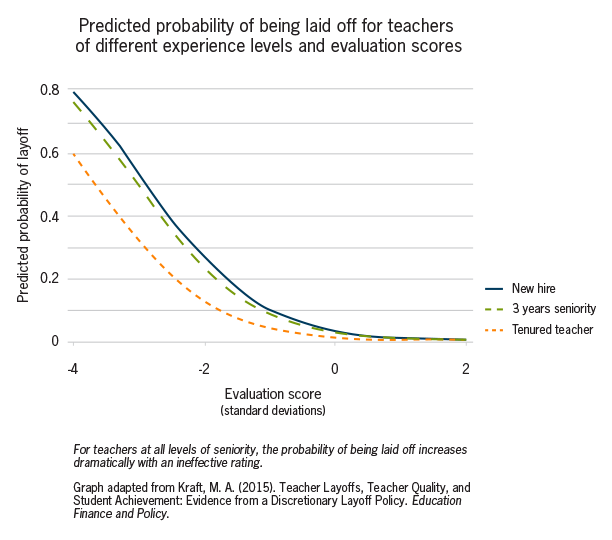No one’s happy about laying off teachers during an economic downturn, but some approaches to deciding who to lay off may yield better results than others. Breaking away from the many districts that still rely on “last in, first out” (LIFO) policies that shed the newest teachers regardless of their effectiveness, one district tried giving principals total say over which teachers were to be let go.
A new paper from Matthew Kraft at Brown University found that when Charlotte-Mecklenburg Schools gave principals this discretion the results were better for students and likely led to greater cost savings and fewer layoffs as well.
Since collective bargaining is against the law in North Carolina, the school district could establish reduction in force (RIF) policies unilaterally. The district gave principals five broad criteria for selecting teachers for involuntary reductions: 1) eliminating duplicative or excess personnel and positions; 2) planning for future enrollment projections; 3) job performance considerations; 4) job qualifications—including tenure status, education and licensure type and status and 5) seniority.
It seems that principals used their power wisely. They identified teachers who were generally less effective than average, based on both principal evaluations and value-added calculations (the latter was true even though principals never saw their teachers’ value added scores—they were calculated by Kraft during the study). In fact, teachers who were evaluated as one standard deviation lower by a principal had a four percentage point increase in the probability of being laid off.
Teachers weren’t selected for layoffs purely based on their evaluation scores, though. Teachers facing layoffs usually fell into one of the following categories: non-tenured, returning-retired (meaning they had retired, were rehired and were drawing both a salary and a pension), teachers hired after the start of the school year, those with a licensure deficiency or low-performing teachers.

Teacher effectiveness aside, Kraft also suggests that this dismissal policy stacks up favorably in terms of cost and number of layoffs as well. For example, he estimated that the policy in Charlotte cut the budget by more than $30 million with 645 layoffs, whereas a standard LIFO policy would cut the budget by $25 million with 781 layoffs.
Contrary to many people’s fears, a discretionary hiring policy didn’t lead to widespread dismissal of teachers with the greatest seniority (given that they garner the highest salaries), but rather it produced layoffs of a mixed group of individuals who tended to be lower-performing.
